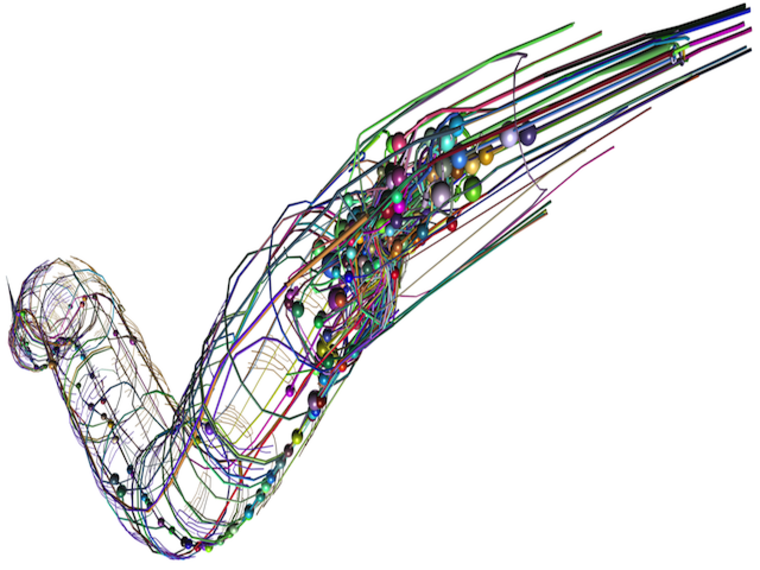
Biologists have counted and sorted each of the 959 cells in the millimeter-long, see-through roundworm. Now a group of coders and neuroscientists are using that data to bring that worm to life.
Stephen Larson co-founded the OpenWorm project in 2011 with a vision to "create the world's first virtual organism in the computer," he told NBC News.
In an iPhone app that costs $1.99, you can see the guts of the worm — C. elegans to biologists — that the team has uploaded so far. "You can peel its skin off and look at all the cells, you can spin it around and rotate it," Larson says.
In the wireframe image of the virtual worm, you'll see 302 neurons that help a real worm move and eat and mate. The dots are the nerve cells and the lines are the stringy links between them.
The group just put the final touches to five connected virtual muscle cells as well. When transplanted in the model, they'll make the virtual worm move.
The ultimate goal is to have an artificial worm that replicates the rich biological complexity of a real worm, from the chemical interactions all the way to its wriggling body motion.
Scientists studying the worm anywhere in the world are invited to upload their data into the model to help fill in an complete picture. "We're building a platform where all those investigators can put their observations and see them work together," Larson says.
Nidhi Subbaraman writes about technology and science. Follow her on Twitter and Google+.
